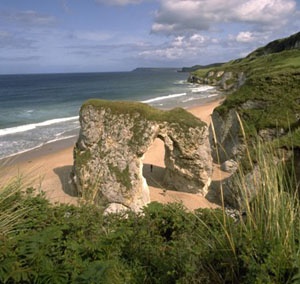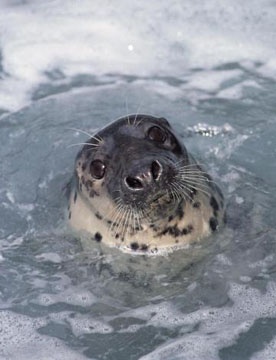Designated Natural Heritage Sites
There is a wide range of protected sites within the AONB reflecting its high landscape value and rich biodiversity. The most important designated site is the Giant’s Causeway and Causeway Coast World Heritage Site. Designated primarily, because of its geological interest, this is Northern Ireland’s only World Heritage Site and one of fewer than 800 in the world.

The area also includes one Special Area of Conservation (SAC). The North Antrim Coast SAC has been designated primarily because of the importance of its cliff top vegetation. SACs are protected because they have been identified as some of the most seriously threatened habitats in Europe.
Sheep Island is designated as a Special Protection Area (SPA). These sites have international importance for breeding, over wintering or migrating birds. Sheep Island is nationally important as a breeding site for cormorants.
There are eight Areas of Special Scientific Interest (ASSIs) within the Causeway Coast AONB including Whiterocks, Whitepark Bay, Runkerry, Giants Causeway and Dunseverick, Portballintrae, Sheep Island, Carrick-a-rede, Ramore Head and Skerries. ASSI sites have been designated by Environment and Heritage Service because of their high scientific interest in terms of flora, fauna, geology, physiographical or other features.
National Nature Reserves (NNRs) are designated in areas with nationally important populations of plants, animals, birds or where the area is considered to have outstanding geological interest. The Giant’s Causeway NNR is the only National Nature Reserve within the Causeway Coast AONB.
Flora and Fauna, including Marine Life

The Causeway Coast AONB supports a wide biodiversity including many rare plants and flowers. In spring and summer wild flowers bring this unique landscape to life including the blue spring squill, pink thrift and white sea campion. Closer to the shore there are specialist plant communities such as saltmarsh and fen supporting unusual plants such as the oysterplant. Wild thyme, harebell, eyebright and ragwort are common within the dune systems and occasionally you can find rare orchids and the beautiful flowering grass of parnassus. On the higher ground near Ballintoy yellow ‘whin’ bush blossom and purple heather are common in late summer.
In winter the exposed Causeway Coast can be a harsh environment for trees however small copses of ash, hazel and blackthorn survive in the more sheltered areas.

Animal life is plentiful within the AONB and species found within the area include rabbit, badger, fox and Irish hare. From time to time otters visit the coastline whilst the cliffs support a rich seabird community. There are many breeding populations of bird including guillemot, razorbill, kittiwake and fulmar. Eider ducks hug the rocky coast and wading birds such as the redshank and oystercatcher are common. Less common bird species include the peregrine falcon and chough.
As a coastal area the Causeway Coast AONB has a wide variety of marine life. Rock pools are home to shellfish, seaweeds, sea anemones, shrimps and crabs as well as several varieties of small fish such as blennies and gobies. Pollack, wrasse, dogfish and conger eel are common along the rocky coast. Plaice and flounder prefer the sandy areas. Off shore small whales, porpoise and basking sharks visit these waters and seals are common. Salmon and sea trout run the River Bush.
Insect life within the AONB includes a wide range of butterflies, crane flies, beetles and weevils. The Giant’s Causeway National Nature Reserve supports the only known population of narrow-mouthed whorl snail in Northern Ireland. This species is protected at a European level.
Geology

The Causeway Coast AONB has a unique geological heritage. It includes rocks from the Jurassic period (135-190million years old) at Portrush and White Park Bay, white limestone from the Cretaceous period (65-135million years ago) and Tertiary basalts (60-65million years ago) which characterise much of the AONB area.
The most important geological site within the AONB is the Giant’s Causeway and Causeway Coast World Heritage Site. Its world famous hexagonal columns are believed to have formed as lava cooled and contracted within a former valley area. Columns developed at right angles to the surface as the lava cooled and shrank vertically to develop convex and concave “ball and socket” joints. Some of these have been weathered by wind and sea to produce a dramatic coastal landscape.

